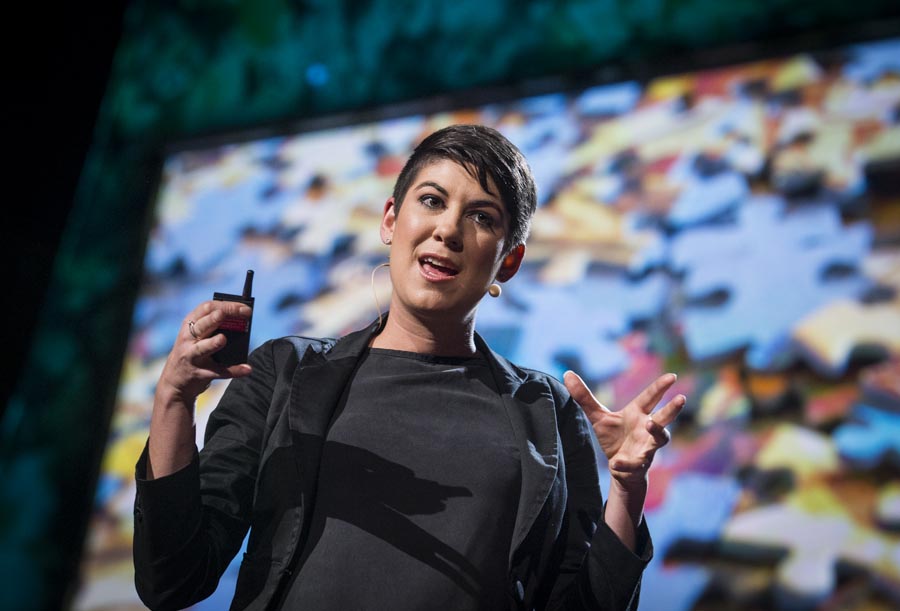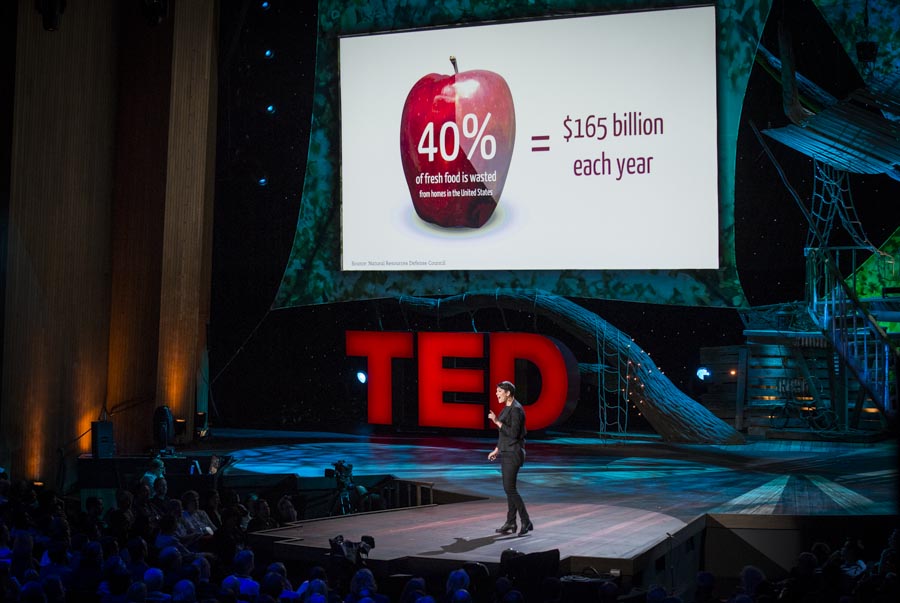
Photos: James Duncan Davidson
We all know sustainability is essential to our future, in vague terms. But what does that mean for the choices we make every day? In other words: paper or plastic? For one thing, design consultant Leyla Acaroglu wants you to think beyond choosing a material for your grocery tote. Instead, she encourages us to think about the entire life of a finished product, to think hard about the net impact a product has on the environment. This is life-cycle thinking, not just whether a product can be recycled, but all the parts of its existence: material extraction, manufacturing, packaging and transportation, product use, and end of life. Every step of the way, there’s a way to do something smart to make the most out of the product for net environmental gain.
She introduces (and busts) some myths:
1. “Biodegradability”
This is a word used a lot in marketing, but it’s not what you think. Yes, when a natural material ends up in nature it biodegrades normally. But most of our discarded natural materials end up in landfills, anaerobic environments where the carbon molecules can’t break down and instead release methane, which is a 25 times more potent greenhouse gas than carbon dioxide. Biodegradability, Acaroglu says, isn’t everything.
2. Fridges
Your fridge is great, but it’s killing the environment. And not just because it requires so much energy to run, but because it keeps things fresh — and keeps getting bigger, so it’s easier to fill with food … that you’re going to end up throwing out. According to Acaroglu, in the U.S. 40 percent of fresh food is wasted each year, amounting to $165 billion. Half of the world’s food is wasted, about 1.3 billion tons per annum. It comes down to the soggy lettuce, kept in a crisper that doesn’t keep things crisp. (In the UK the problem is so bad that there was a notorious Soggy Lettuce Report.) Acaroglu says: Design fridges that help prevent food waste from the start.

3. Electric tea kettles
In the UK, 97 percent of households have an electric tea kettle, and 65 percent of tea drinkers admit to overfilling their kettles, boiling way more water than they need for a cuppa. One day of extra energy use from these kettles is enough to light all the streetlights in London for a night. What we need, Acaroglu says, is not better materials for the tea kettle, but a behavior-changing kettle that helps you boil just what you need.
4. Mobile phone subscriptions
Last year there were 6 billion mobile phone subscriptions; yet only 11 percent of outdated or not-sexy-anymore mobile phones were recycled. In some regions, phones are burned for the gold inside: “it’s now cheaper,” she says, “to mine gold from a ton of phones than a ton of ore.” Acaroglu encourages designing phones for disassembly.
So what’s the answer to paper or plastic? Well, paper pound for pound is more sustainable — but a paper bag weighs 4 to 10 times what a plastic one does.
Comments (2)
Pingback: Leyla’s Blog | mikaylajayneblog
Pingback: Paper or plastic? Debunking an environmental myth | Environmental Folklore